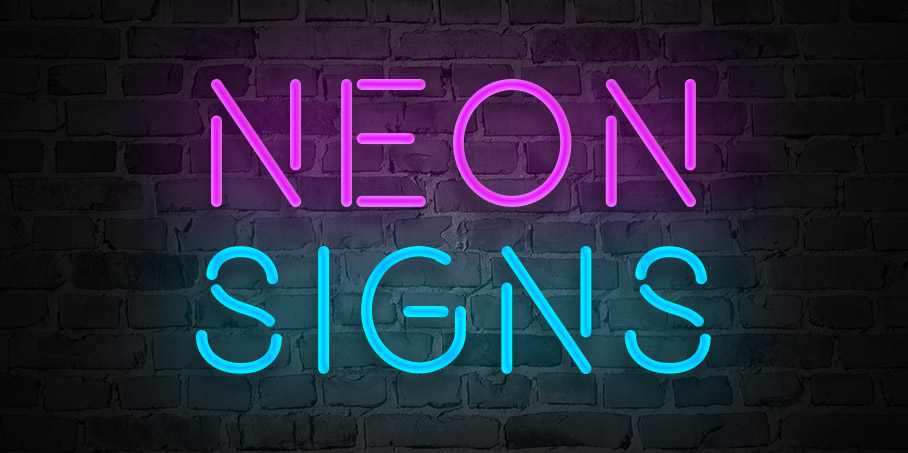
The first ever neon lamp was invented by Georges Claude, a French engineer and chemist who displayed his invention at a Packard car dealership in Los Angeles in 1923. Punters loved the lights unique colourful glow, and ‘liquid fire’ soon became a hit in the US.
Neon has made a healthy resurgence recently, thanks to businesses favouring a retro aesthetic, and embracing more traditional styles of signage. It’s also eye catching, looks great and can really add personality to a business or brand.
Of course, there are important factors to consider when deciding whether neon is the right style of signage for you. That’s why we’ve taken time out to blog the top questions we’re asked by people leaning towards neon signage.
1. Are neon signs safe?
An average neon sign runs on 15,000 volts, so it’s important to treat it with the care you’d treat any electrical appliance. Don’t expose your neon sign to water, never cover them up and don’t run them near anything flammable.
Neon signs are a fire hazard, which means they require regular maintenance (this is why many business owners choose LED instead).
2. Can neon signs be seen in daylight?
Yes. A neon sign glows brightly enough for it to be seen during daylight hours. Like most lights, its glow won’t be as vibrant during the day, however the wording and colours will still be easy to see. The colour white is the one exception to this rule.
3. What’s the difference between neon and LED signage?
LED stands for Light Emitting Diode, which means it relies on a semi-conductor device to turn energy into light. LEDs live in a polymer tube, which means they’re typically easier to handle and more flexible than neon. They’re also thinner, and therefore take up less space. As a result, LEDs can contain greater detail. They’re also more environmentally friendly, as they use less power to run.
With all of this in mind, you’re probably wondering why anyone chooses neon at all. However, it’s uniquely warm glow and retro aesthetic makes it a real statement. In fact, people are even installing neon signs at home featuring special quotes or words.
4. Can my neon sign be installed outside?
If you’d like a neon sign installed outdoors, it will need a plastic cover to protect it from the elements. This can be easily done by our sign techs. Signs can also be mounted on the wall or hung inside a window.
5. How much is a neon sign?
The cost of a neon sign will depend on the complexity of the design and construction. Of course, we can provide you with an obligation-free quote, so you can see whether the cost is within your budget.
Love neon?
Find out more about the neon sign options we have available. Our technicians can custom make neon signs to suit your needs, or we can recommend other signage solutions that you may not have considered.

